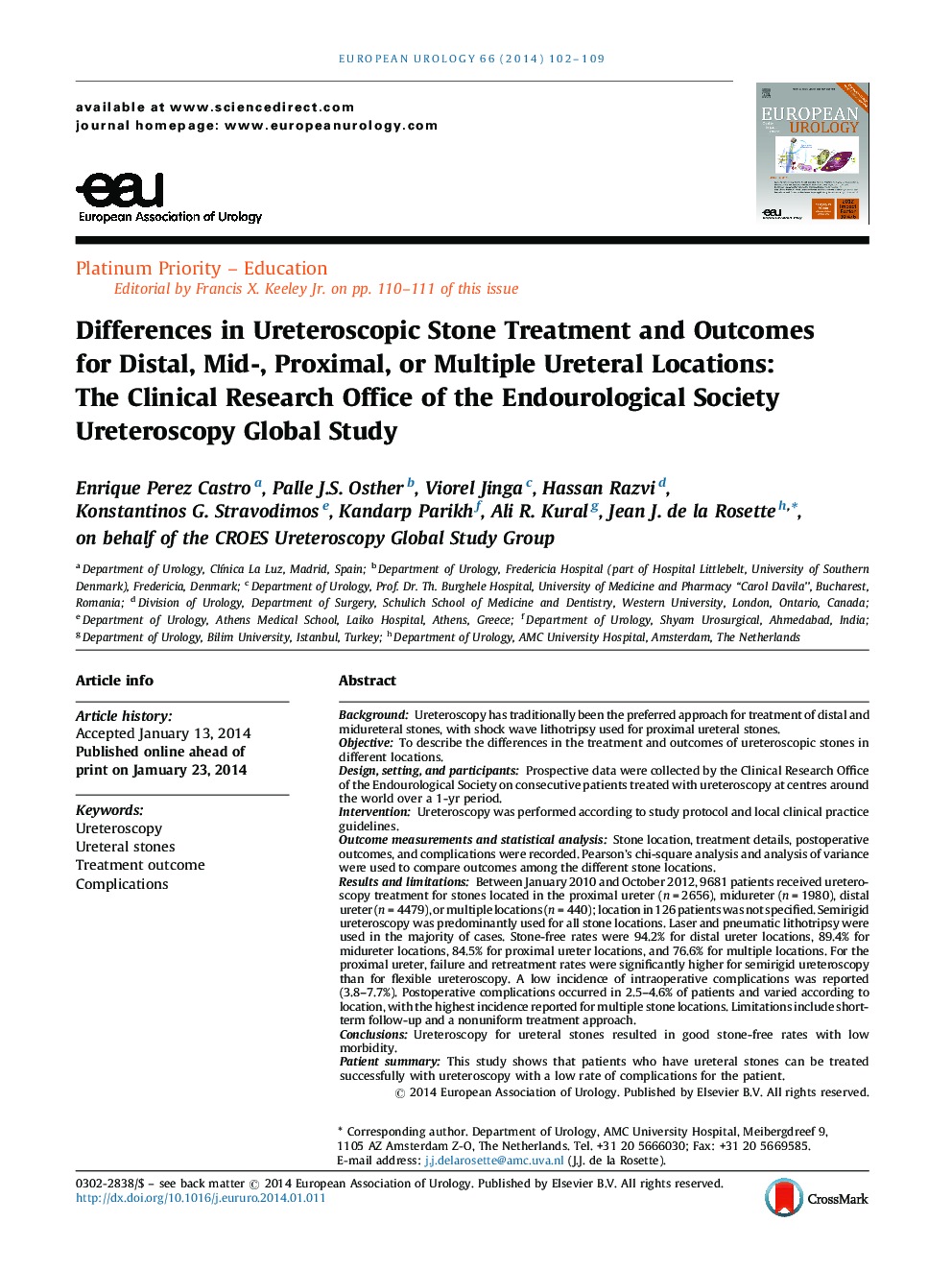| کد مقاله | کد نشریه | سال انتشار | مقاله انگلیسی | نسخه تمام متن |
|---|---|---|---|---|
| 6175498 | 1252968 | 2014 | 8 صفحه PDF | دانلود رایگان |
BackgroundUreteroscopy has traditionally been the preferred approach for treatment of distal and midureteral stones, with shock wave lithotripsy used for proximal ureteral stones.ObjectiveTo describe the differences in the treatment and outcomes of ureteroscopic stones in different locations.Design, setting, and participantsProspective data were collected by the Clinical Research Office of the Endourological Society on consecutive patients treated with ureteroscopy at centres around the world over a 1-yr period.InterventionUreteroscopy was performed according to study protocol and local clinical practice guidelines.Outcome measurements and statistical analysisStone location, treatment details, postoperative outcomes, and complications were recorded. Pearson's chi-square analysis and analysis of variance were used to compare outcomes among the different stone locations.Results and limitationsBetween January 2010 and October 2012, 9681 patients received ureteroscopy treatment for stones located in the proximal ureter (n = 2656), midureter (n = 1980), distal ureter (n = 4479), or multiple locations (n = 440); location in 126 patients was not specified. Semirigid ureteroscopy was predominantly used for all stone locations. Laser and pneumatic lithotripsy were used in the majority of cases. Stone-free rates were 94.2% for distal ureter locations, 89.4% for midureter locations, 84.5% for proximal ureter locations, and 76.6% for multiple locations. For the proximal ureter, failure and retreatment rates were significantly higher for semirigid ureteroscopy than for flexible ureteroscopy. A low incidence of intraoperative complications was reported (3.8-7.7%). Postoperative complications occurred in 2.5-4.6% of patients and varied according to location, with the highest incidence reported for multiple stone locations. Limitations include short-term follow-up and a nonuniform treatment approach.ConclusionsUreteroscopy for ureteral stones resulted in good stone-free rates with low morbidity.Patient summaryThis study shows that patients who have ureteral stones can be treated successfully with ureteroscopy with a low rate of complications for the patient.
Journal: European Urology - Volume 66, Issue 1, July 2014, Pages 102-109
